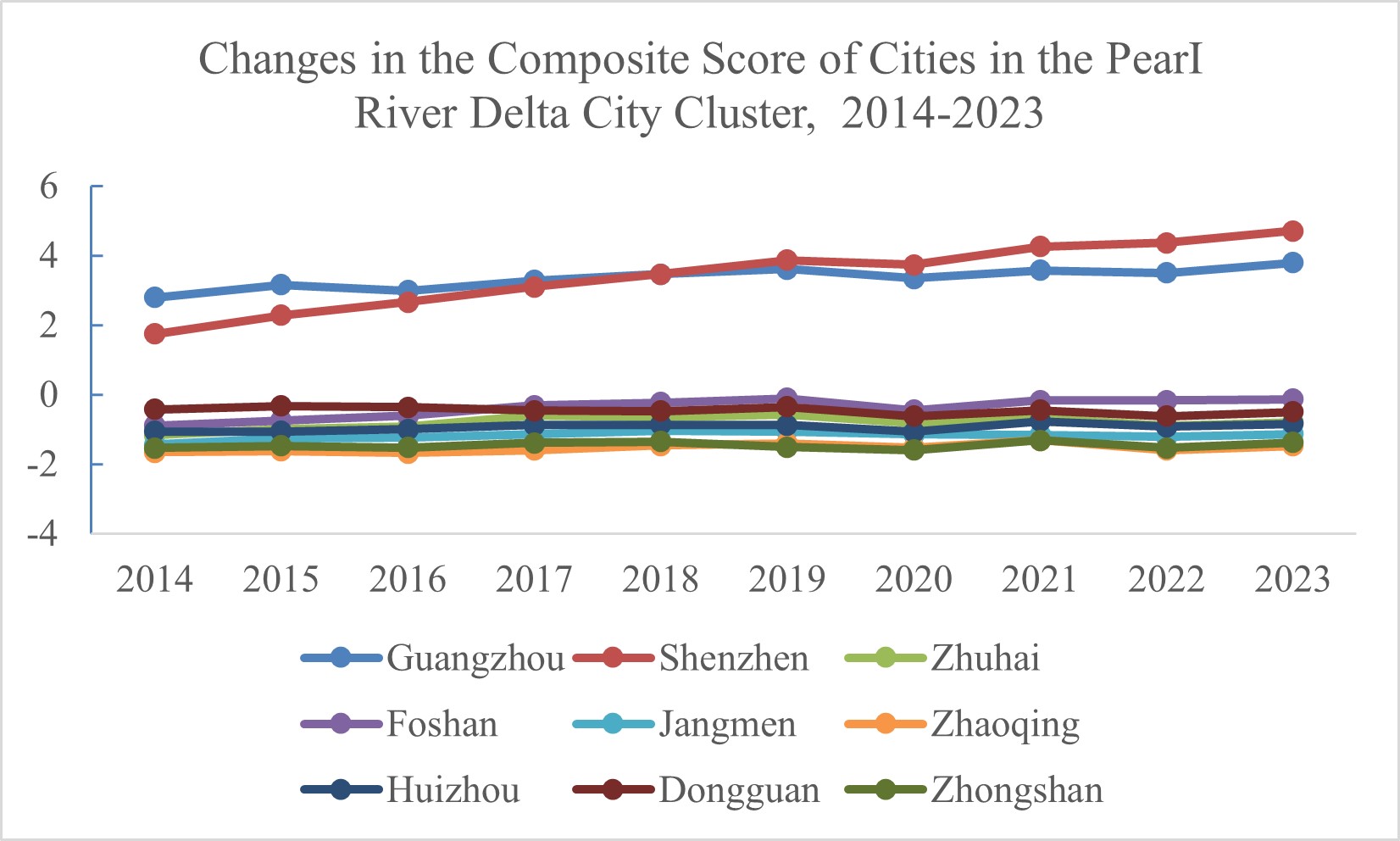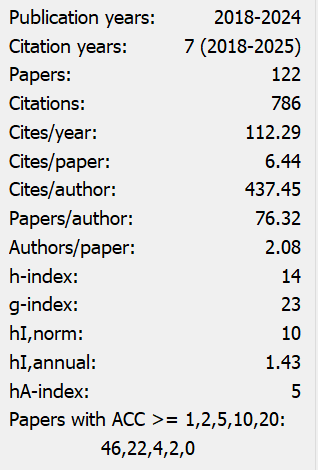A Study on the Economic Interdependence Between Jiangmen and Other Cities in the Pearl River Delta Urban Agglomeration
Abstract
This study takes the Pearl River Delta Urban Agglomeration in 2023 as its research sample, employing principal component analysis to measure economic quality. The indicators used to assess economic quality include economic development level, economic structure, population and logistics, and degree of openness. By constructing a modified gravity model, the study analyzes the economic interdependence between Jiangmen and other cities in the Pearl River Delta Urban Agglomeration. Jiangmen ranks highest in terms of economic ties with Shenzhen, followed by Guangzhou, while their economic connections with other cities are relatively weak. Based on an analysis of the current state of economic interdependence between Jiangmen and other cities in the Pearl River Delta Urban Agglomeration, together with its existing issues, several policy recommendations are proposed.
References
[2] Xia, Y. (2025). A study of the impact of digital technology spillovers on the unevenness of urban economic development in metropolitan areas—Based on the analysis of the Beijing-Tianjin-Hebei Metropolitan Area. China Journal of Commerce, 34(5), 9–12.
[3] He, Y., Tang, J., Zhou, J., Li, L., Zhou, Y., & Liu, H. (2025). The decoupling relationship between economic development and expansion of urban construction land in Chengdu-Chongqing Economic Circle. Journal of China West Normal University (Natural Sciences), 46(3), 285–293.
[4] Wu, S. (2025). Exploring the role of urban clusters in promoting coordinated regional economic development: A review of “Urban Clusters and Coordinated Regional Economic Development”. Journal of Commercial Economics, (13), 2.
[5] Qi, J. (2025). The impact of capital deepening on the high-quality development of the trade and commerce industry in the context of the digital economy—Take the three major urban clusters of Beijing-Tianjin-Hebei, Yangtze River Delta and Pearl River Delta as examples. Journal of Commercial Economics, (15), 184–188.
[6] Chen, G., Chen, Y., Wang, G., & Peng, T. (2025). The impact of multidimensional network embedding on the economic growth of five major urban agglomerations in China. Geographical Research, 44(4), 1158–1174.
[7] Chen, X., & Wang, B. (2025). Research on the logistics network structure of the central plains urban agglomeration based on a gravity model. Times of Economy & Trade, 22(5), 27–31.
[8] Zhang, X., Bian, Z., & Long, S. (2025). Spatial pattern analysis based on gravity network model—Taking the Chengdu Chongqing Urban Agglomeration as an example. Information & Computer, 37(3), 158–160.
[9] Wang, D., & Zhang, G. (2024). Empirical analysis and sensitivity analysis of the inter-city economic gravity model: A case study of Jiangsu Province. Real Estate World, (10), 39–43.
[10] Zhan, J., Yang, X., & Feng, W. (2024). Research on urban economic connectivity and spatio-temporal evolution of Beibu Gulf urban agglomeration based on GIS analysis. China Journal of Commerce, (5), 5–8.
[11] Zhang, S., & Liu, C. (2021). Research on financial resource allocation efficiency of Beijing-Tianjin-Hebei urban agglomerations based on DEA model. Huabei Finance, (8), 33–43.
[12] Gui, Y. (2018). The study on the economic relationship between Guangdong-Hong Kong-Marco Greater Bay Area and the world's three great bay areas [Master’s thesis, Shenzhen University].
[13] Sun, J., & Luo, B. (2016). A study on the economic linkages among cities in the Beijing-Tianjin-Hebei Region based on the modified gravity model. Exploration of Economic Issues, (8), 71–75.
[14] Yang, W. (2019). Measuring the economic gravity of China's three major urban agglomerations and implications for the coordinated development of the Beijing-Tianjin-Hebei Region. Financial Forum, 24(4), 71–80.
[15] Wu, C. (2020). A study on strategies for the integration of adjacent regions into the Guangdong-Hong Kong-Macao Greater Bay Area based on a gravity model: The case of Heyuan City. Economic Forum, (5), 65–71.


This work is licensed under a Creative Commons Attribution 4.0 International License.
Copyright for this article is retained by the author(s), with first publication rights granted to the journal.
This is an open-access article distributed under the terms and conditions of the Creative Commons Attribution license (http://creativecommons.org/licenses/by/4.0/).


























